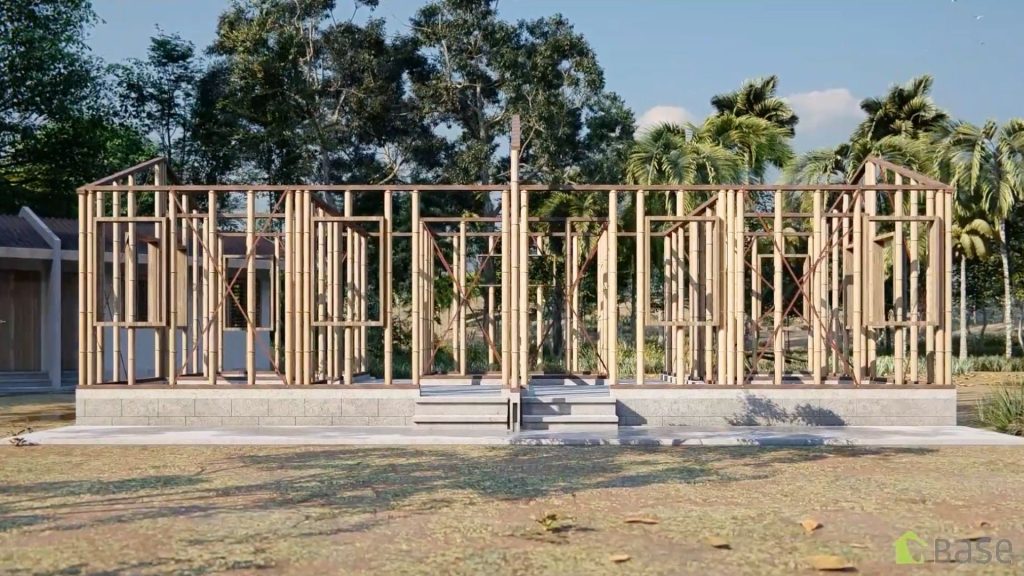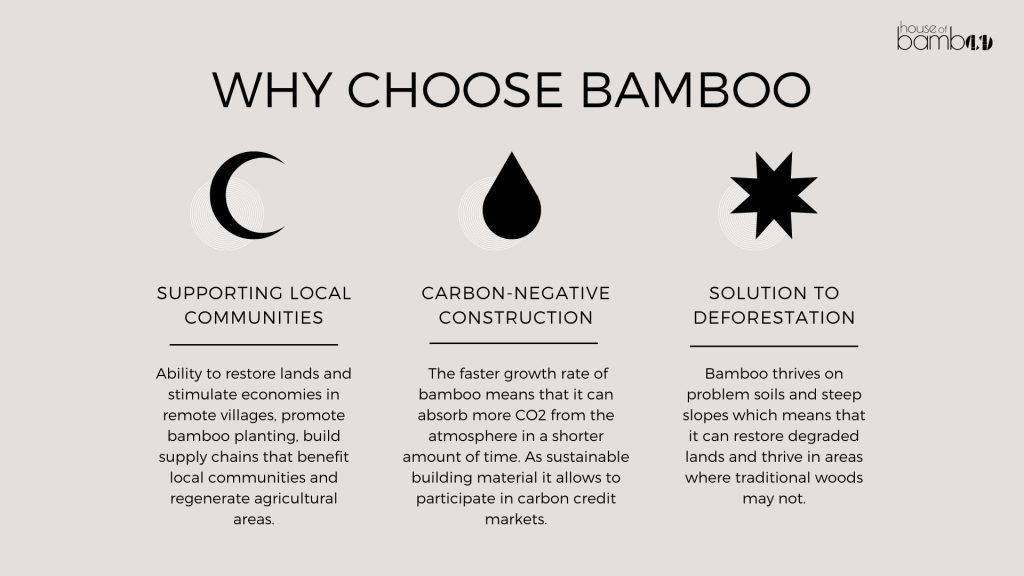Bamboo: A Thriving Alternative to the Alarming Timber Shortage
Bamboo has long been overlooked and not fully understood as a game changer in the fight against deforestation. One of the main reasons for deforestation is accelerated timber demand. This in turn causes supply shortages. A commonly held belief is that the solution hinges on planting more timber. However it is imperative that alternative supplies such as bamboo get equal share of the task at hand.
The simple fact is that the world harvests more trees than it is able to plant. The numbers are alarming. 15 billion trees harvested per year vs 5 billion planted. With a net loss of 10 billion trees every year we could see the loss of all trees within 300 years. Here is a series of solutions unique to bamboo and should help illuminate its potential.

Bamboo vs Timber: Progress in Months vs Decades
The attempt to reduce carbon emissions within the construction industry means that timber is fast becoming a replacement for concrete, aluminium and steel. The benefits of this are twofold – we reduce emissions by dampening demand for the likes of concrete, aluminium and steel and instead use timber which can absorb carbon from the atmosphere and store it in its biomass. However, while this is an admirable initiative it only feeds the decline of timber stock.
Bamboo on the other hand functions in a similar way to timber – in terms of carbon absorption but the key difference is its superior rate of growth. The faster growth rate of bamboo means that it can absorb more CO2 from the atmosphere in a shorter amount of time. Additionally, it must be noted that In its first year a single bamboo stalk can grow up to 20m compared to timber which grows at a rate of about 35-45m every 25 years. Timber measures its progress in years whilst bamboo measures its progress within months. The more we embrace bamboo the quicker we can overcome deforestation.

One of the main attractions of bamboo is that its forests don’t need to be ‘cleared’, in the same way that timber forests are. Therefore a bamboo harvest has much less impact on the land and the ecosystems within it.
When harvesting bamboo it is does not need to be re planted i.e. bamboo can be harvested many times over from the same plant. The bamboo has a unique rhizome root system which exists underground and continues to shoot unaffected by any harvesting..so there is no need for planting and no destruction of land.
How Growing Populations will Benefit from Bamboo
As we can grow bamboo faster than timber it is a no-brainer that we use bamboo to fundamentally shift the way we look at construction in order to help with chronic shortages of affordable and sustainable housing globally. The preferred scenario is one where Bamboo is grown locally, however challenges arise in countries where bamboo is not traditionally grown, limiting its availability for construction biomass.

In the Philippines, Base, a local company, has harnessed abundant local bamboo resources to engineer affordable housing solutions in areas grappling with housing supply. By utilising locally grown bamboo and employing cement bamboo frame technology, Base creates eco-friendly homes, exemplifying the potential of a circular economy and local material utilisation.

In regions without access to bamboo, companies like BamCore have established partnerships beyond their geographic boundaries to build supply chains that benefit local communities and regenerate agricultural areas. BamCore, based in California, spearheads carbon-negative construction. It developed the BamCore Prime Wall, a scalable, prefabricated wall system with a carbon footprint below zero.
BamCore’s story stands out for its emphasis on cultivating a supply chain that supports innovative technologies. They actively promote bamboo planting in deforested tropical areas and aim to restore lands and stimulate economies in remote villages.
Why Bamboo Plantations are Needed on Every Continent

In locations where bamboo is scarce there are further advances. Bamboo Logic, a European company, invests in the establishment of bamboo forests across the continent. By building bamboo plantations and selling carbon credits, Bamboo Logic contributes to Europe’s carbon goals. This pioneering initiative addresses the lack of local biomass in Europe and enables businesses to leverage bamboo’s benefits while reducing carbon emissions.
Bamboo Logic’s infrastructure provides the necessary framework for large-scale bamboo cultivation. This makes it easier for businesses to embrace bamboo as a sustainable building material and participate in carbon credit markets.
Through these various endeavours, bamboo emerges as a versatile and sustainable solution for construction, offering an opportunity to alleviate housing shortages while promoting environmental stewardship and supporting local communities.
Why Regeneration is the Essence of Bamboo
Agricultural expansion is one of the biggest drivers of deforestation. As the population grows, more land is needed for farming; this leads to the clearing of forests and the need to build new infrastructure in order to support or facilitate these new areas of agriculture. This includes- the need to build new roads, create irrigation systems, the expansion of rural settlements which also leads to the building of new housing, schools and medical services. All of these factors can contribute to the fragmentation of ecosystems, loss of wildlife and increased soil erosion.

An important feature of bamboo is its ability to restore problem soils. Bamboo thrives on problem soils and steep slopes which means that it can restore degraded lands and thrive in areas where traditional woods may not. The features of bamboo that make this possible are its extensive root system – that helps anchor the soil which in turn prevents erosion.
Bamboo also has a tolerance to acidic and alkaline soils which means that it can thrive in areas where other plants may not. This versatility means that bamboo needent compete with agriculturally productive areas in the same way that timber forests do. Agriculture and timber forests need certain conditions in order to thrive whilst bamboo doesn’t.
In the final analysis, bamboo is a key part of the solution to deforestation. Its rapid growth rate, versatility and eco-friendliness make it an excellent option for those looking to reduce their environmental footprint. By using bamboo as an alternative to traditional hardwoods or planting it for reforestation purposes, bamboo can help protect and preserve our planet’s forests and the critical ecosystems that rely upon them.

While bamboo can go a long way in promoting sustainability and combating deforestation, it is important that we continue to strive for a comprehensive approach to environmental sustainability in all areas of our lives. By working collaboratively towards versatile and sustainable practices, we can protect and restore our planet for future generations.
Read the article by Jennifer Snyders, BScArch | CEO House of Bamboo on LinkedIn
